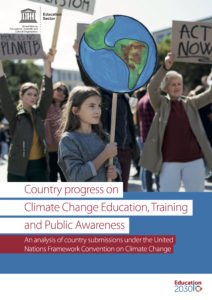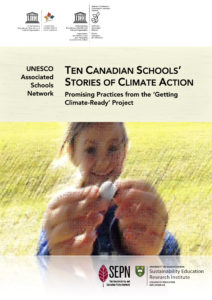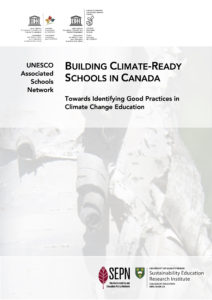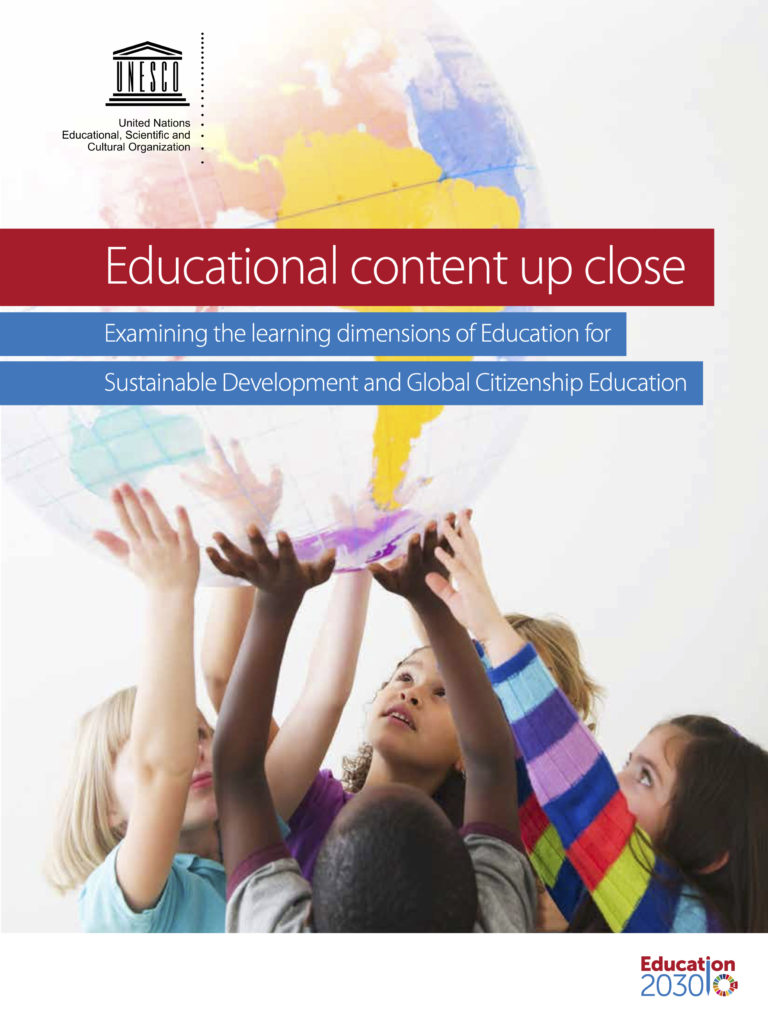Project Overview
Global Citizenship Education (GCED) and Education for Sustainable Development (ESD) are part of the 2030 Agenda for Sustainable Development, built into Sustainable Development Goal (SDG) 4 on Education. More specifically, Target 4.7. prioritizes ESD and sustainable lifestyles, human rights, gender equality, promotion of a culture of peace and non-violence, global citizenship, and the appreciation of cultural diversity.
In taking ESD and GCED forward, three dimensions of learning – cognitive, social and emotional and behavioural – are essential for advancing a value-based and holistic approach to transformational learning. The UNESCO Transitions Project examines whether, and to what extent, these three learning dimensions are prioritized in commitments to ESD and GCED learning in pre-primary, primary, lower secondary, and upper secondary education in a selection of 10 countries from UNESCO’s 5 geographic regions.
The study reviews how the three dimensions of learning are reflected across the four education levels to identify the relative emphasis on each learning dimension in relation to ESD and GCED learning, as well as within each education level and across countries.
Access the “Educational Content Up Close: Examining the Learning Dimensions of Education for Sustainable Development and Global Citizenship Education” report here.

Methods
The study examined a total of 263 policy and curriculum documents — national education laws, national education strategic plans, national curriculum frameworks, national GCED/ESD-specific documents, and national subject-specific curricula from the 10 countries in the study.
The coding scheme included eight categories of ESD and GCED themes, related to:
(1) Cultural diversity and tolerance; (2) Peace and non-violence; (3) Human rights and gender equality; (4) Environmental sustainability; (5) Sustainable consumption and production; (6) Human survival and well-being; (7) The three pillars approach to ESD; and (8) Other ESD and GCED intended learning.
In addition, The learning dimensions were coded as:
(1) Cognitive dimension; (2) Social and emotional dimension; (3) Behavioural dimension; and (4) Other (i.e., approaches that combine multiple dimensions in a way that does not allow them to be separated out).


Key Findings

Overall, there is a declining emphasis on the social and emotional learning dimension from pre-primary education to upper secondary education, and an increased emphasis on cognitive learning from pre-primary education to upper secondary education. The emphasis on the behavioural dimension is less than on the other two dimensions and remains more consistent across education levels. There is a greater focus on the cognitive dimension in social sciences and natural sciences subject curricula, whereas the social and emotional dimension receives a slightly greater focus in languages and in other required courses across levels, as well as in general curricula at the pre-primary and primary levels.
While some countries have an overall greater focus on the cognitive learning dimension in ESD and GCED learning (e.g. Sweden, Mexico and Costa Rica), other countries, including Kenya, Lebanon, Morocco and the Republic of Korea, emphasize the social and emotional dimension. In no country do the three learning dimensions receive similar levels of focus at all four education levels.
National education laws focus more on the social and emotional dimension in references to ESD and GCED learning compared to other document types. In these other documents, an emphasis on the three learning dimensions was found. All of the documents we examined included roughly twice as much material related to GCED than ESD. Across all documents, GCED content focuses more on the social and emotional dimension than the cognitive dimension, and has a lesser focus on the behavioural dimension. ESD content focuses more on the cognitive dimension than the behavioural dimension, and placed the least emphasis on the social and emotional dimension.

Recommendations
The study highlights the following take-away points:
1. Patterns vary: The study shows that the relative emphasis on each of the three learning dimensions varies across education levels and countries, reflecting specific contexts, systems, and needs.
2. Importance of holistic learning: The study shows there is a great need for countries to pay more attention to the social and emotional and behavioural dimensions of learning to create synergistic impacts across all three learning dimensions.
3. Focus on subject domains: The study shows an emphasis on different learning dimensions depending on the subject domain where ESD and GCED is included. In light of this, ESD and GCED education stakeholders need to pay more attention to the subject domains where topics are taught, as this can determine the emphasis placed on the three learning dimensions and ESD and GCED learning overall.
4. Whole-school approaches: UNESCO recommends whole-school approaches to ESD and GCED so that educational systems model and teach ESD and GCED understandings not only through the explicit curriculum and pedagogy, but also through the physical and operational environment of schooling, through engagements with community, and via overall governance priorities.
5. Future research: The study focused exclusively on curriculum and policy materials. Future research should explore what is happening in classroom and school environments to explore learning processes and outcomes related to the three dimensions of learning.

Related Resources
 |  |  |
| Global Climate Change Education Monitoring | Ten Canadian Schools’ Stories of Climate Action | Building Climate-Ready Schools in Canada |

